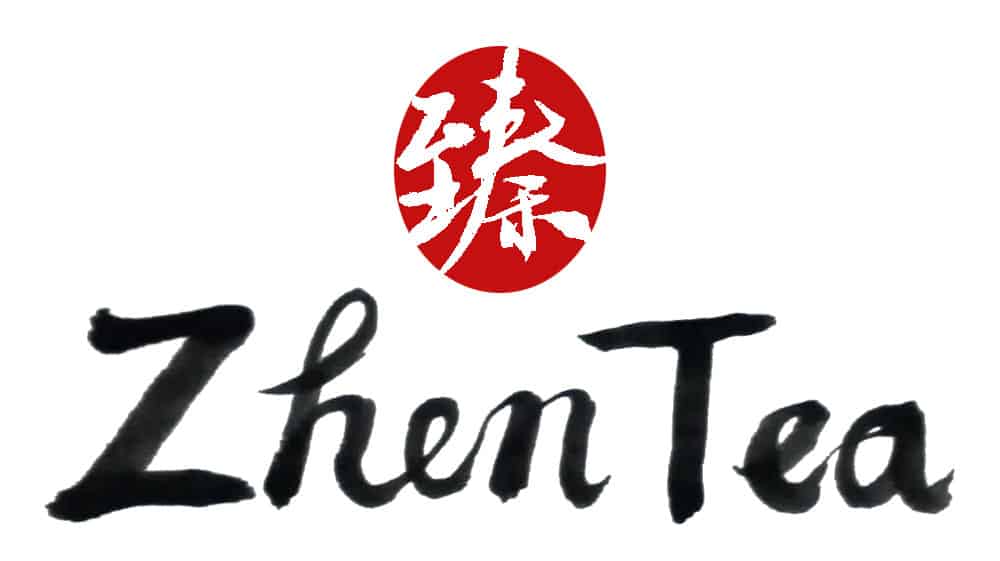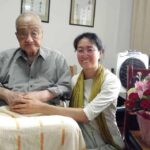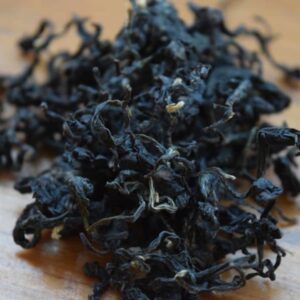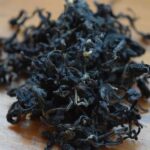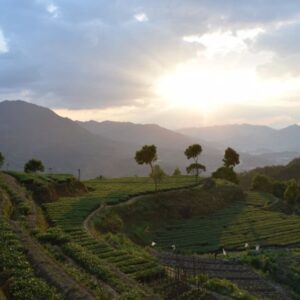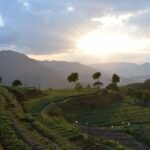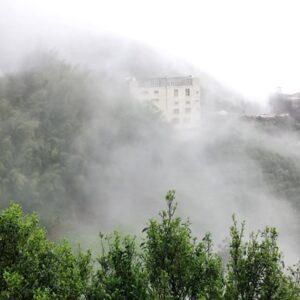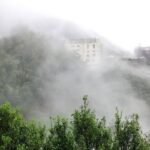Morning “Brake”
Despite finishing quite late the night before, we were up around 6 am the next day. After breakfast, we got back to work ‘sifting’ the tea, a manual process where imperfect leaves are removed from the tea. This step is time consuming and hence expensive, but it’s not just to improve the appearance of the tea, it also improves the flavour. For these teas, the sifting process will be repeated once more.
As you saw in the earlier posts, it has been unseasonably cold in many of the tea regions and it was a cold day again today, unfortunately. To make matters worse, closing the doors and windows is just not done during the day time in this area, so sitting their sifting the leaves I was literally freezing my butt off! Luckily the charcoal fires were being lit up to prepare for the final baking steps, and those offered us a little reprieve from the bone chilling cold. After lunch we took a walk around the village. We got a chance to see a larger tea factory. Raw leaves go in and finished product comes out. The factory is able to do some customization depending on the producers’ requirements, but there are limits on the quality level of automated tea production.
Lu’an Guan Pian – the Big Fire Roasting
The final step is so crucial and takes a high degree of skill. Those same coals that offered us relief from the cold earlier weren’t really for us. The tea is placed over a hot charcoal fire to bake, but it’s not a static activity at all. The producer must tend to the tea the whole time. Every second counts when the tea is being baked and leaving it slightly too long or not baking it enough could easily ruin the tea. The producers have to adjust the timing for the leaves they are working with, using sensory cues such as smell, feel and appearance. It differs from season to season, from day to day in fact. It’s the reason some are called masters and some are not. Mr. Li undertook this exhausting task by himself and you can see to the right some tea baked by Mr. Li compared to some tea baked by one of the other producers. Can you tell which one is better? Do you know why?
Huoshan Huang Ya – the Yellowing Process
Night comes but there is not rest for Mr. Li or us yet. Now it’s time to get to Huang Ya. The yellowing process is a process that can fairly easily ruin what would have been perfectly good green tea if it’s not done correctly. Another labour intensive step. The tea is wrapped up in moist fabric for the wet yellowing process and put in a warm environment, much like proofing bread. The difference is the leaves have to be flipped and mixed every so often to ensure the moisture is evenly distributed throughout the tea. You can see the progress of the yellowing process in the pictures.
Huoshan Huang Ya – the Little Fire Roasting
The final step in producing yellow tea is the little fire bake. It takes between 1 and 2 hours of non-stop baking, constantly flipping and moving the leaves. The tea maker uses his hands to circulate the tea, even when it’s on the fire. He does this so he will know precisely when the tea is ready to come off the fire. And when this is done, we have Yellow Tea!
